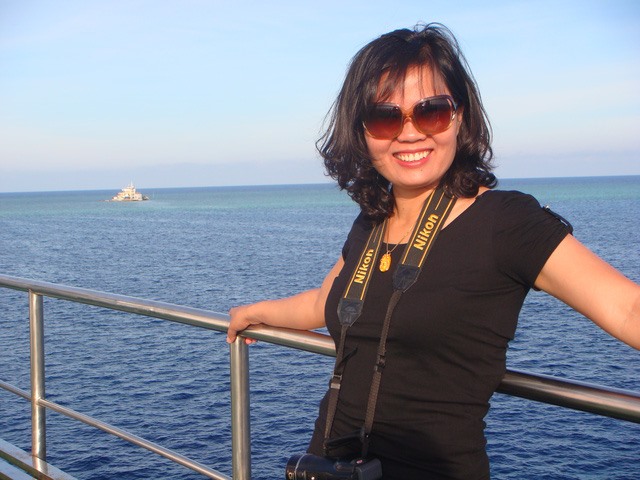 Life & Style
Life & Style

Vọng Nguyệt (Wishing Upon The Moon) is the second musical by female director Việt Hương. The movie was shot entirely in the northern province of Ninh Bình. It was released last month on Việt Nam Women’s Day.
 |
| Director Việt Hương. — Photo vtv.vn |
Vọng Nguyệt (Wishing Upon the Moon) is the second musical by female director Việt Hương. The movie was shot entirely in the northern province of Ninh Bình. It was released last month on Việt Nam Women’s Day.
Trà Giang interviews director Hương about her film.
The first scenes in Vọng Nguyệt take viewers back to the past. Why did you want to make such a movie?
I was born in a traditional artist family. I studied at the Việt Nam National Academy of Music’s Traditional Instrument Department. Traditional and folk culture has always inspired me.
I’m a journalist as well as a director. So I thought I should take responsibility to preserve and develop folk culture and make it more popular with young people. Ten years ago, I made my first film about the music of the Tày and Nùng ethnic groups. The two ethnic minority groups are well known not only for their then singing and tính instruments, but also for other traditional artforms, such as sli and lượn cọi singing.
In the first movie, I focused on featuring lượn cọi, which is an amazing form of acapella singing.
Vọng Nguyệt tells a love story between a young scholar and a country girl aiming to highlight the dignity of traditional Vietnamese women. The title Vọng Nguyệt comes from a typical characteristic of people in the northern Red River Delta area. They regard the moon as a lively figure who they can talk to about their dreams and desires.
The musical pieces are from ancient poetry, folk verses and songs. Some also include new lyrics.
How did you make the movie suitable for a modern audience?
I always think of how to make folk culture popular with young people, and help them to learn more about the beauty and value of folk culture. One important thing is that it should be natural and not dogmatic.
The songs in Vọng Nguyệt are made in a modern style accompanied by traditional instruments such as the đáy, thập lục (16-chord zither), and bamboo flute. I invited the best instrumentalists to accompany singer Hồng Duyên.
The singing is a crossover of old and new styles. It is emotional and easy to enjoy. I’m satisfied with the movie because it respects Vietnamese folk culture.
Does singer Hồng Duyên play a key role in the movie?
Duyên is a young singer but her voice is mature and emotional. I was charmed with her voice. This is the first time Duyên has starred in a movie. She is intelligent and suits the character. She won second prize at the Sao Mai National Singing Contest in 2015.
Did you face difficulties in choosing locations for the film?
One of the biggest challenges for a director is selecting the background for a scene, especially on a tight budget.
For example, I wanted to shoot a river. We tried to find a section of river in Bắc Giang Province, but could only shoot in one area because there were many boats on the water.
We encountered similar problems at the Vạn Phúc Silk Village. Some of the houses and roads were new. We had to borrow old silk looms from the village and invite two artisans to teach us how to use them.
Our traditional culture is a national treasure. If the government doesn’t have a strategy to protect old architecture, it will disappear.
I want my work to contribute to protecting and developing traditional culture. Vọng Nguyệt was made with great efforts by the crew. I really enjoyed making it because it portrays the culture of our ancestors. — VNS




